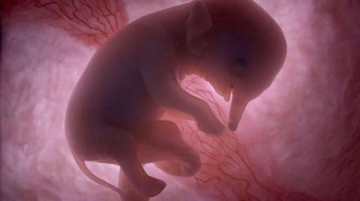Elephant Gestation
The elephant species, which includes the Asian elephant as well as the African savannah and forest elephants, represent an amazing case of exceptional reproductive physiology and anatomy among mammals. The specific features of the female elephant’s reproductive tract and its special reproduction-associated hormones were discovered by researchers in the 1950s.
Reproductive Features
Some of the elephant’s special reproductive features include a long oestrus cycle which lasts between 12 and 16 weeks. Also, the ovaries present five corpora lutea (CLs), as opposed to other mammals which show only one corpus luteum (CL), double LH-peak during the follicular phase and a 1.5 meter-long vestibulum which precedes the vagina.
Longest Gestation Period
Of all mammals, the elephant has the longest gestation period, which lasts anywhere between 620 days and 680 days (almost two years), with intervals between births that generally last between four and six years. Typically, the Asian elephant has a gestation period of 645 days and the African elephant 640 days.
Elephants Giving Birth
The elephant cow carries only one fetus. The chance of it carrying twins is only about one percent. Also, it usually gives birth during the wet season. At the time of birth, the elephant calf typically weighs around 260 pounds and it is able to stand and walk after only a couple of days.
In the female elephant, there is no contribution of placentally-derived progestagen if conception occurs and the accessory CLs (acCLs) in the elephant gestation are derived from unruptured luteinized follicles, which is different from the acCLs formation in the pregnant female horse, for instance.
In addition, researchers could not identify chorionic gonadotropin in the pregnant elephant uterus. It is believed that additional active corpora lutea form during the early elephant gestation and they represent sources for progesterone required during the pregnancy.
More to Learn
Despite continuous research, essential aspects related to reproduction in elephants, such as the slow embryonic development, maternal recognition, and timing of implantation, are not fully and clearly understood.

